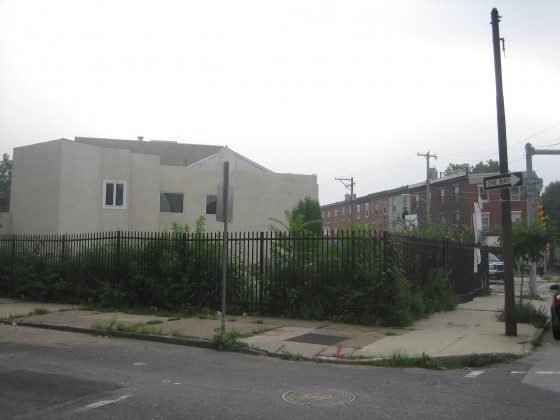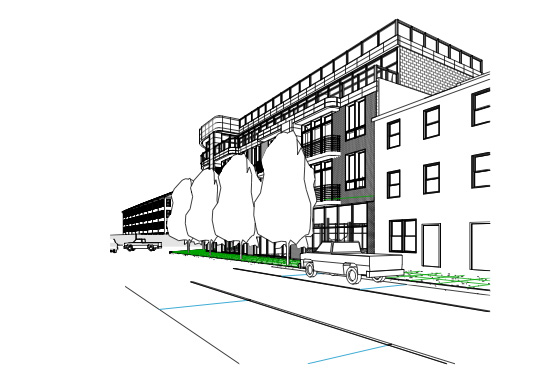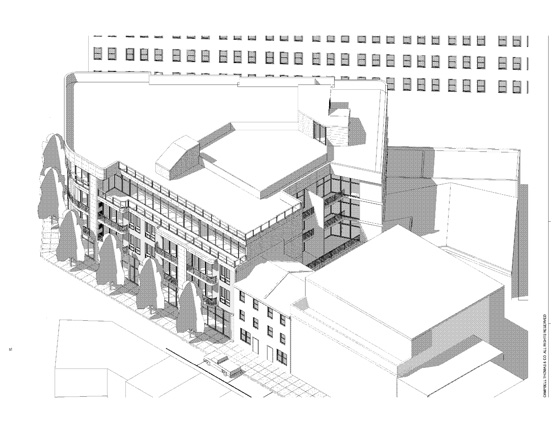As we detailed a few months ago, local developer Steve Rodriguez and local architect Jim Campbell of Campbell Thomas are working to construct a new four-story building at a currently vacant triangular lot at the intersection of Bainbridge St., 24th St., and Grays Ferry Ave.
The building will include 23 residential units, 24 underground parking spaces, a green roof, and ground-floor retail. The new building would bring much-needed life to a surrounding area that has seen tremendous growth in recent years. With Naval Square around the corner, Toll Bros. (imperfect) 2400 South St. (probably) being built across the street, and several stores on Grays Ferry Ave. and South St., this seems like a no-brainer to neighborhood residents and outsiders alike.
We can only imagine the shock that the developer experienced when three locals, Liz Begosh, Antoinette Mazol, and Arthur Elwood, appealed the ZBA’s approval of this project at the end of last year. Once Rodriguez closed on the property in April, Begosh and Mazol were willing to settle. They explained that their objections were mostly because they didn’t like the way the building looked, and they were satisfied with a couple of small design changes that Campbell was planning to go with anyway. Mr. Ellwood, however, was another story entirely.
Mr. Ellwood, a CPA and small-time developer himself, didn’t wish to settle so easily. He had numerous little details and modifications that he insisted on in order to agree to drop the appeal. This led to ideas and suggestions from the other two appellants. For example, he sought a 32″ roof deck railing instead of a 37″ roof deck railing. He wanted glass railings instead of solid railings. Going back and forth with a laundry list of little changes was driving the architect crazy. Architects go through years of schooling and additional years of professional training to become experts in building design- for three laypeople to make these tiny, sometimes arbitrary architectural changes over the course of several weeks was not only costly for the developer but resulted in a Frankenstein of a building.
The cherry on the frap: The developer has to follow the neighbors’ changes to the letter or he loses a $20K bond. His attorney has suggested that he will never see that money again. So a developer who wanted to build a first-class building and make improvements to his neighborhood has to pay a ransom for the privilege of doing so. And let’s not kid ourselves and think that this is a localized thing: it happens all over the city.
This whole sad story is an example of how zoning provides a small number of people with the ability to hamstring a developer at a very low cost. Rodriguez estimates that he will have spent $20-30K on lawyers fees by the time this is over, which doesn’t count the bond he probably won’t get back. He thinks that the appellants spent perhaps 20% of what he’s spent. Just think: You too could spend a few thousand dollars to extort tens of thousands from a developer!
For what it’s worth, Rodriguez doesn’t believe that the neighbors appealed with the intention of bilking him of money. He believes that they were hoping he would abandon the project and another developer would step in (Toll Bros., anyone?), or the lot would remain vacant. His sense is that their attorneys were the ones pushing for the ransom money. Nothing like the lawyers making more money while the community gets a less attractive building.
After nearly a year of wrangling, Rodriguez hopes to break ground at the end of the year.



